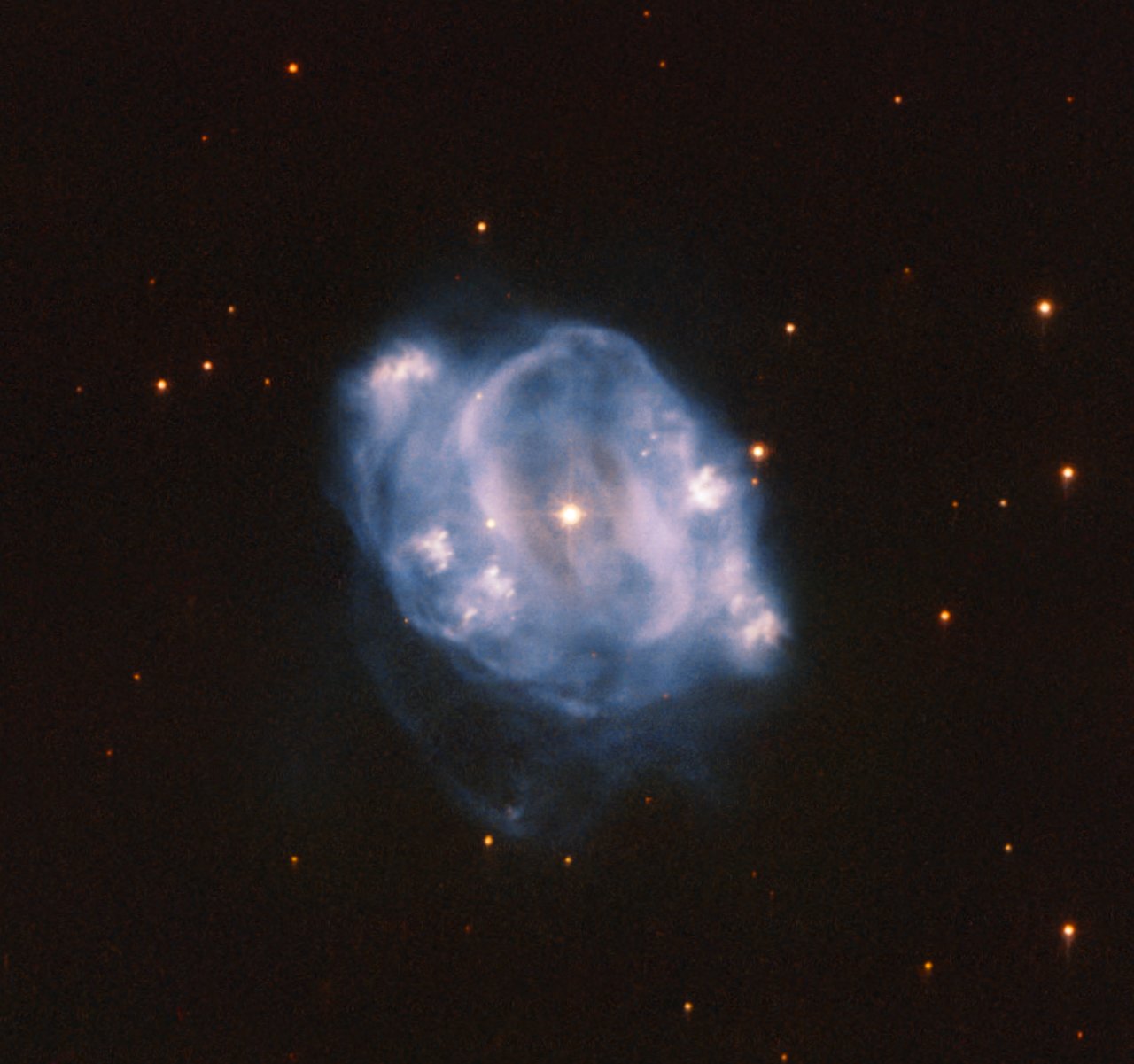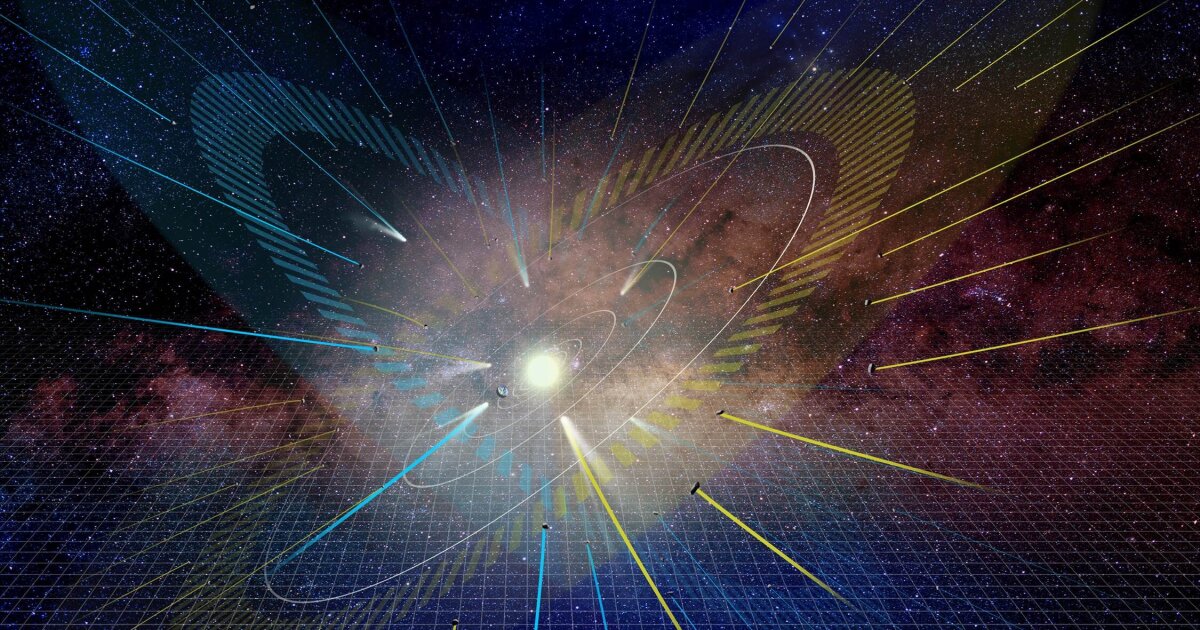
But for decades astronomers had assumed that this stellar wind was spherical. After all, the stars themselves are spherical and emit the solar wind in roughly equal directions.
But a suite of new observations conducted with the Atacama Large Millimeter/submillimeter Array (or ALMA) reveal a different picture: anything but a sphere.
The observations show that the winds coming from the stars follow complex patterns: sometimes a boring sphere, sometimes spirals, and even sometimes something approaching the wings of a vast nebular butterfly. These observations show that previous assumptions about how much of this gas ends up in the interstellar mix can be off by up to a factor of 10.
In case you are keeping track:
Tatooine-like exoplanet could be orbiting in this triple-star system | | kmov.com

(CNN) -- When Luke Skywalker emerges from his home at dusk on the planet Tatooine in "Star Wars: Episode IV - A New Hope," he watches twin suns setting in the sky. The two suns are misaligned, with one lower in the sky than the other.
That could be the view from a potential planet orbiting in the GW Orionis system, according to new research. This system contains three stars and is located 1,300 light-years away from Earth in the Orion constellation.
"Unknown Population" --Multi-Star Systems Harboring Planets With Very Strange Orbits |

Home » Astronomy » “Unknown Population” –Multi-Star Systems Harboring Planets With Very Strange Orbits
* * *
Unlike our remarkably flat Solar System, with its planets all orbiting in the same plane, the alien star-system GW Orionis, located just 1,200 light-years away in the constellation of Orion, has three stars and a deformed, shattered and warped disc of tilted rings surrounding them.
“Any planets formed within the misaligned ring will orbit the star on highly oblique orbits and we predict that many planets on oblique, wide-separation orbits will be discovered in future planet imaging surveys,” Kreplin added.
Scientists Discover 'Mini-Moon' Orbiting the Earth and it is Size of a Hippopotamus

Many planets have multiple moons, but Earth has a solitary satellite orbiting it. However, for a brief period of time, Earth has a "mini-moon" to keep it company. The extra-planetary body is actually an asteroid called 2020CD3. Its diameter is between 1.9-3.5 m, which is roughly a size between a cow and a hippopotamus.
The new 'moon' has been temporarily bound to the Earth. It was discovered on Tuesday by Minor Planet Centre at International Astronomical Union. The centre is the official organization for naming, studying, and analysing all minor planetary and extra-planetary bodies in the solar system.
Many things are taking place:
'Extreme planet' orbits star in three Earth days, has temperatures of 3,120 degrees Celsius | CTV

First satellite of high-orbit segment of GLONASS to be orbited 2025 - Science & Space - TASS

MOSCOW, October 2. /TASS/. A high-orbit segment of the navigation system GLONASS will begin to be created in 2021, with the first launch under the program due in 2025, the system's general designer, Sergey Karutin, told TASS in an interview.
"For meeting the customers' needs for top-notch services a high-orbit space segment of GLONASS will begin to be created in 2021, with the first satellite scheduled for launch in 2025," Karutin said.
The segment will be up and running by the end of 2027. Karutin said the segment would consist of six space satellites in three plains. As a result, the accuracy of navigation in the Eastern Hemisphere will be improved by a quarter.
Kratos Announces Space Domain Awareness Services to Assess Spacecraft Orbiting in Close Proximity
SAN DIEGO, Sept. 15, 2020 (GLOBE NEWSWIRE) -- Kratos Defense & Security Solutions, Inc. (Nasdaq: KTOS), a leading National Security Solutions provider, announced it will begin offering data services to characterize spacecraft in Geosynchronous Orbit (GEO). This has great value for Space Domain Awareness (SDA) and will be offered to government and commercial organizations internationally.
Kratos services will identify and accurately locate spacecraft in GEO using a powerful Space Domain Awareness (SDA) technique called Passive RF Ranging. Traditionally, the ephemeris of a unique spacecraft at GEO is derived from data obtained through ground-based radars and optical telescopes.
Comet orbits suggest a second major solar system alignment plane

If you look at a chart of the solar system, one of the most obvious facts about it is that almost everything in it lies more or less in the plane of the ecliptic, which is the plane formed by the Earth's orbit. The other planets, asteroids, and everything else except comets have orbits that lie within a few degrees of this plane.
The reason for this is that as the solar system formed, it did so as a flat disc of gas and cosmic dust revolving around a bulge that eventually became the Sun. In this disc, the debris also drew together to form the planets and the rest. Even the comets formed in this way, although the interaction of the various planetary gravitational fields scattered their orbits at oblique angles. The aphelion, or the spot where they are farthest from the Sun, however, tends to remain in the ecliptic.

No comments:
Post a Comment